Whilst I am a great believer in using locally produced meat from independent suppliers I’m also aware that many people don’t have the income to do this.
I hope to show with this project that you can still make some great products despite this. Many are cheaper than buying them from the supermarket. Yes, the quality may be better with meat produced to higher standards but good products can be made using meat produced on an industrial scale.
This is the piece of meat I bought from a local supermarket that sells pork produced in Britain. It’s around a kilogram of pork loin and cost £4.26 as it was discounted to £4 per kg.
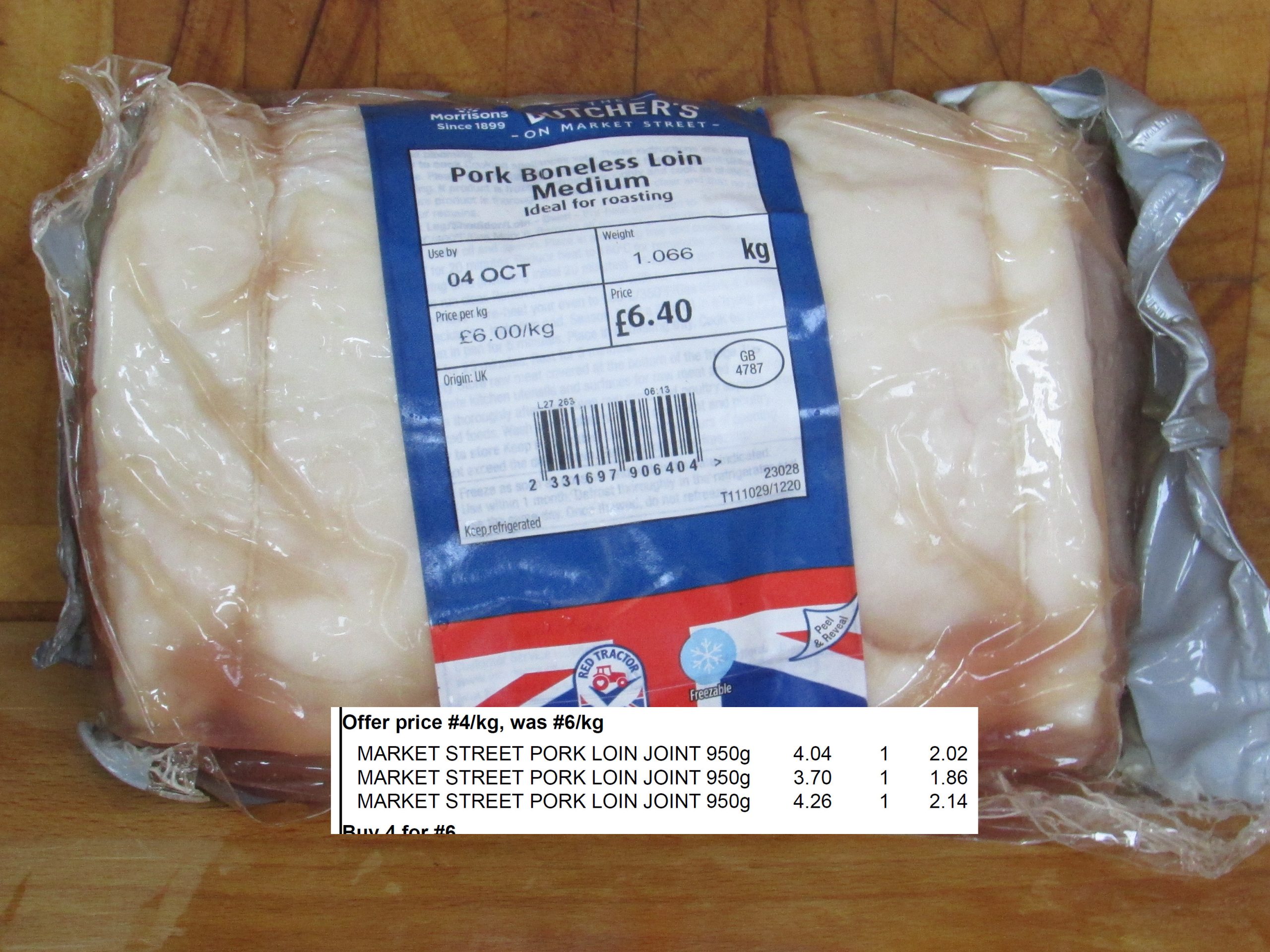
That still may seem like a lot of money to some but the meat it makes can be used instead of cured ham, fried as bacon or be cut into thick slices to use as pork steaks/bacon chops – all of which would be more expensive to buy.
In Germany, it’s called Kasseler and is usually cured with the bones still in; it’s served as bacon chops. Some online references talk of it being smoked, cooked and then stored in brine which seems an odd way of going about things! However the few recipes I can find all make it in the normal way.
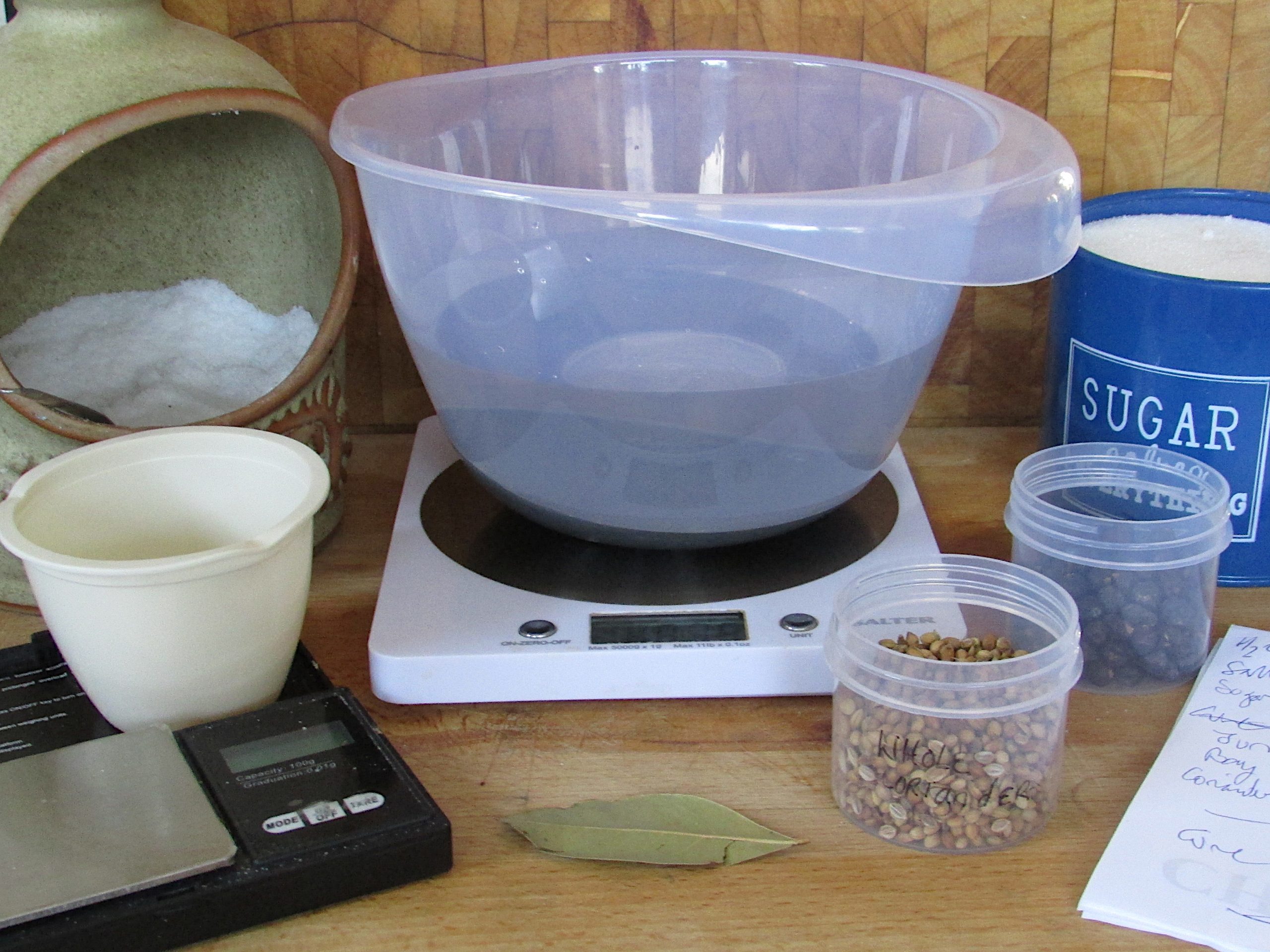
I’ve got everything ready that I’ll need. The spices are optional, they can be substituted or left out completely. The only things here that are out of the ordinary are some curing salt and the small set of scales. The scales are digital and measure to one-hundredth of a gram – somewhat overkill but scales that measure to a tenth of a gram are recommended for measuring the cure #1 curing salt. They’re about a tenner on eBay.
The spices I’ve chosen to use are bay, coriander and juniper. They’re much cheaper from Asian supermarkets than the supermarket and these were also a very good price from a supplier trading on eBay. For this recipe, you don’t need a spice (coffee) grinder as the spices are just crushed. You can use a pestle and mortar for this if you have one. If not, just crush them with the bottom of a saucepan – put it on top of them and push down whilst rocking it from side to side.
The recipe is:
For each 1 kg of pork loin, or pro-rata:
1 kg Water
50g Salt
20gm White sugar
6gm Cure #2
1 Crushed juniper berry (approx 0.15gm)
1 Crushed bay leaf (approx 0.2gm)
0.5gm Crushed coriander seeds
To make the curing brine, all the ingredients except the cure #2 are put into a saucepan, brought to a boil and boiled for about 5 minutes. They are then left to cool completely and put into the fridge until cold. The cure is added to the cold brine and mixed to ensure it has dissolved. The whole brine is then weighed and brought back to the quantity (weight) in the recipe by adding water.
Put the meat into the brine in a container that is small enough to allow the brine to cover the meat.
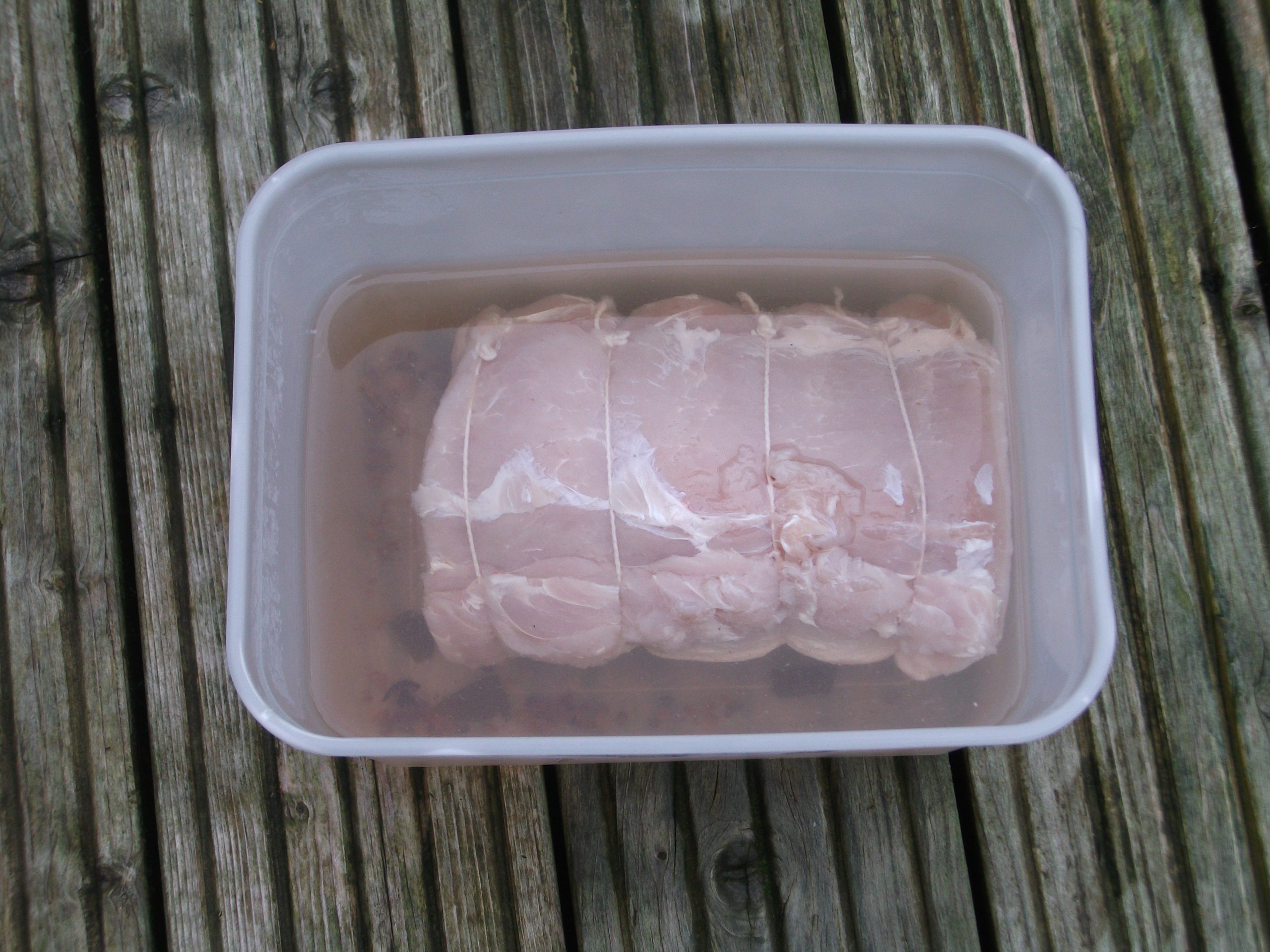
It is now left in the fridge for eight days per kilogram of meat, or pro-rata. The meat is turned over in the brine every couple of days.
As my piece of meat weighed a few grams less than a kilogram I’ve left it in the brine for eight days then drained and rinsed (not soaked) it.
This is the piece I cured. It’s gained about 20gm in weight from the brine.
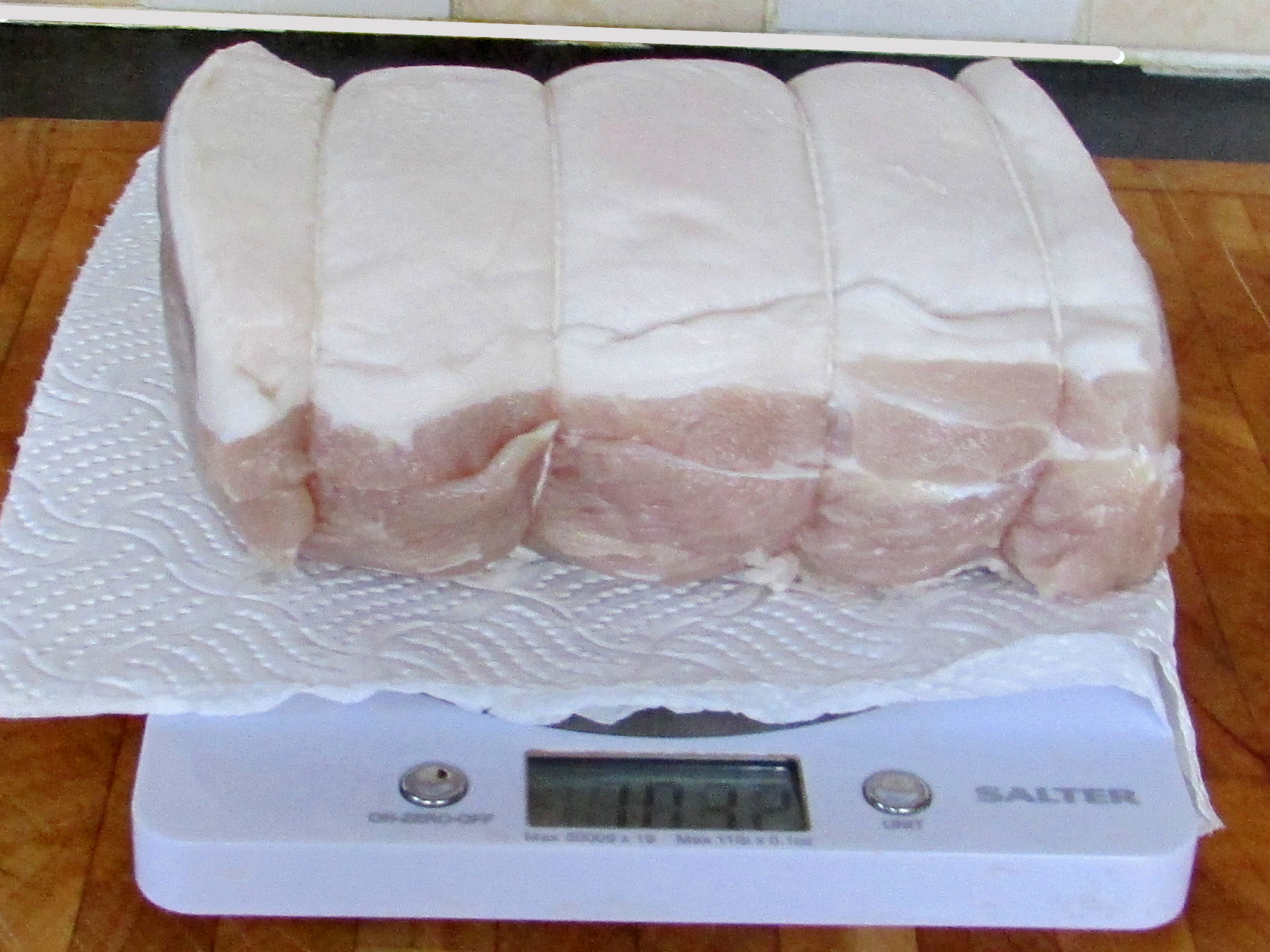
You can see here that it looks quite anaemic. Some of that is due to the nature of pork reared on an industrial scale. Don’t be surprised that it looks no different at this stage though.
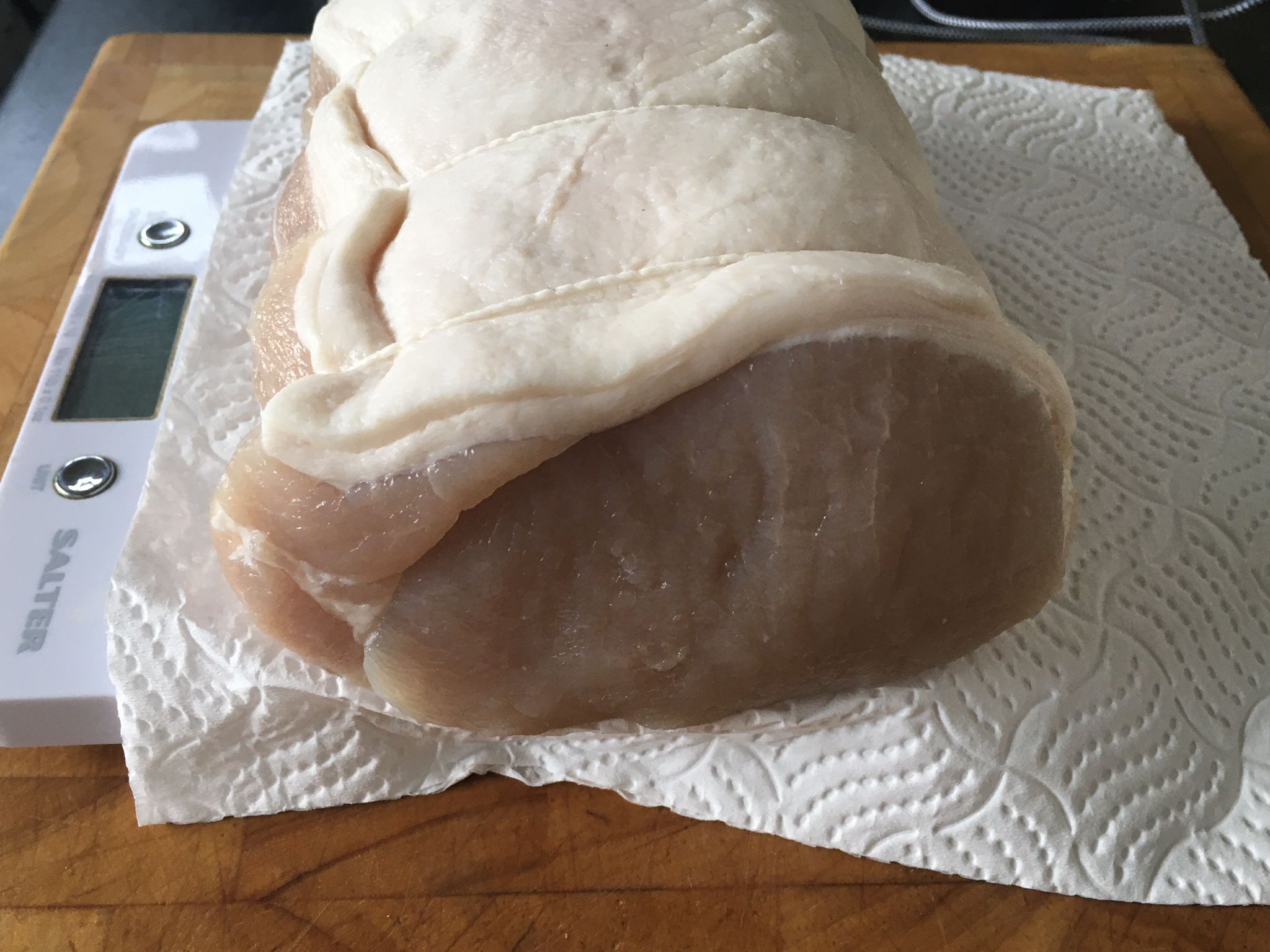
I’ve put it in the fridge to dry overnight before smoking and cooking it.
I’m hot smoking the pork which will cook it as well as smoke it. It could also be cold smoked and then cooked in a domestic oven. I’d use a ProQ cold smoke generator for that.
I’ve chosen to smoke it with alder wood as I have it available and it’s a common smoking wood in Germany.
I’ve got the smoker set to 100°C; the smoke is produced independently by the unit to the side of it.

The meat will cook slowly. After about 2 hours it’s around 60°C. I’ll cook it to 70°C as I don’t expect it to carry on cooking much after the oven’s turned off.
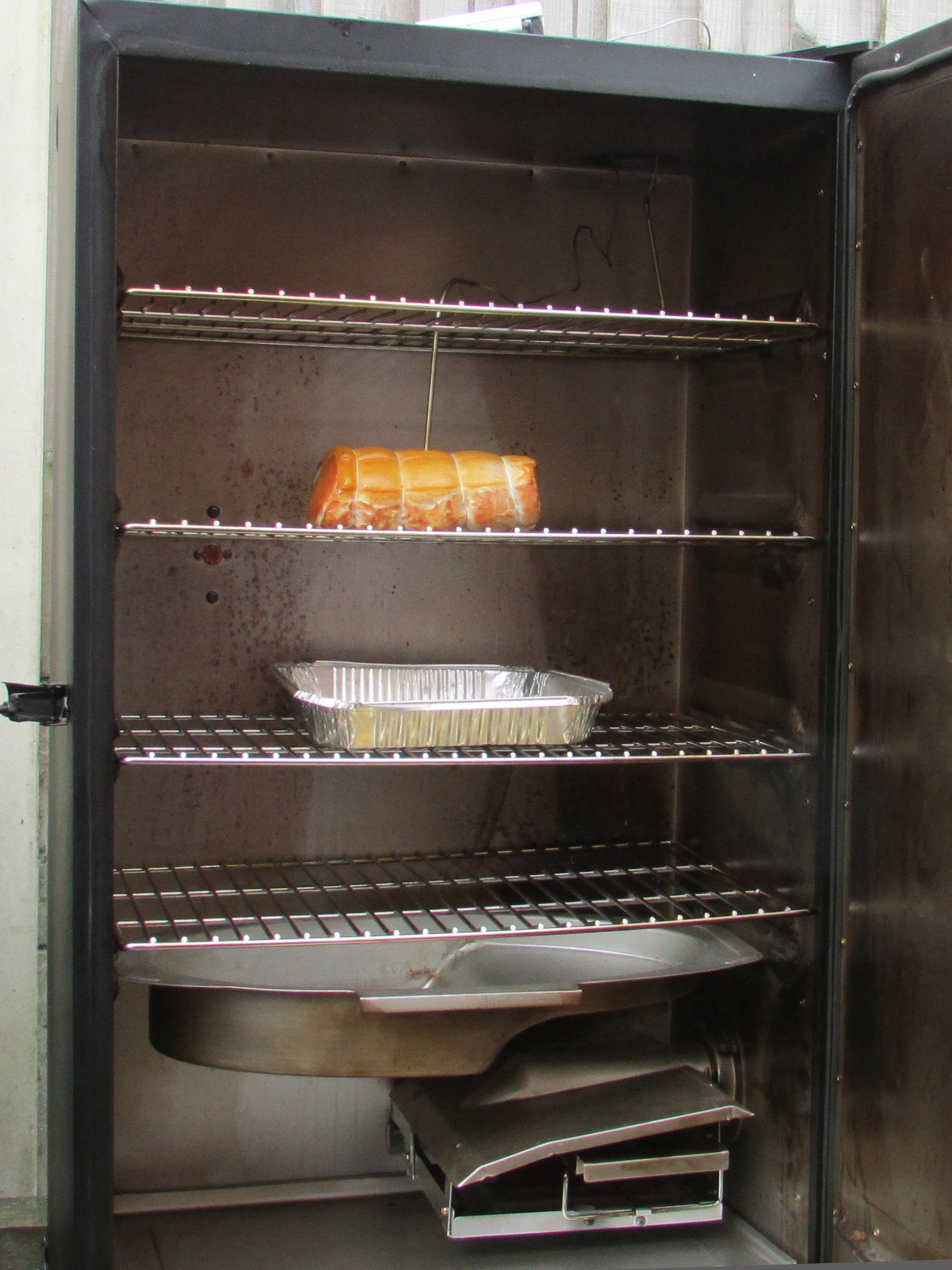
It looks good. I’ll wait for it to cool before slicing it.

We decided not to slice it into chops/steaks but thinly sliced it for sandwiches instead.
The yield from roughly 1kg of meat was 840gm sliced meat plus an end piece of 58 gm which will be great in a quiche.
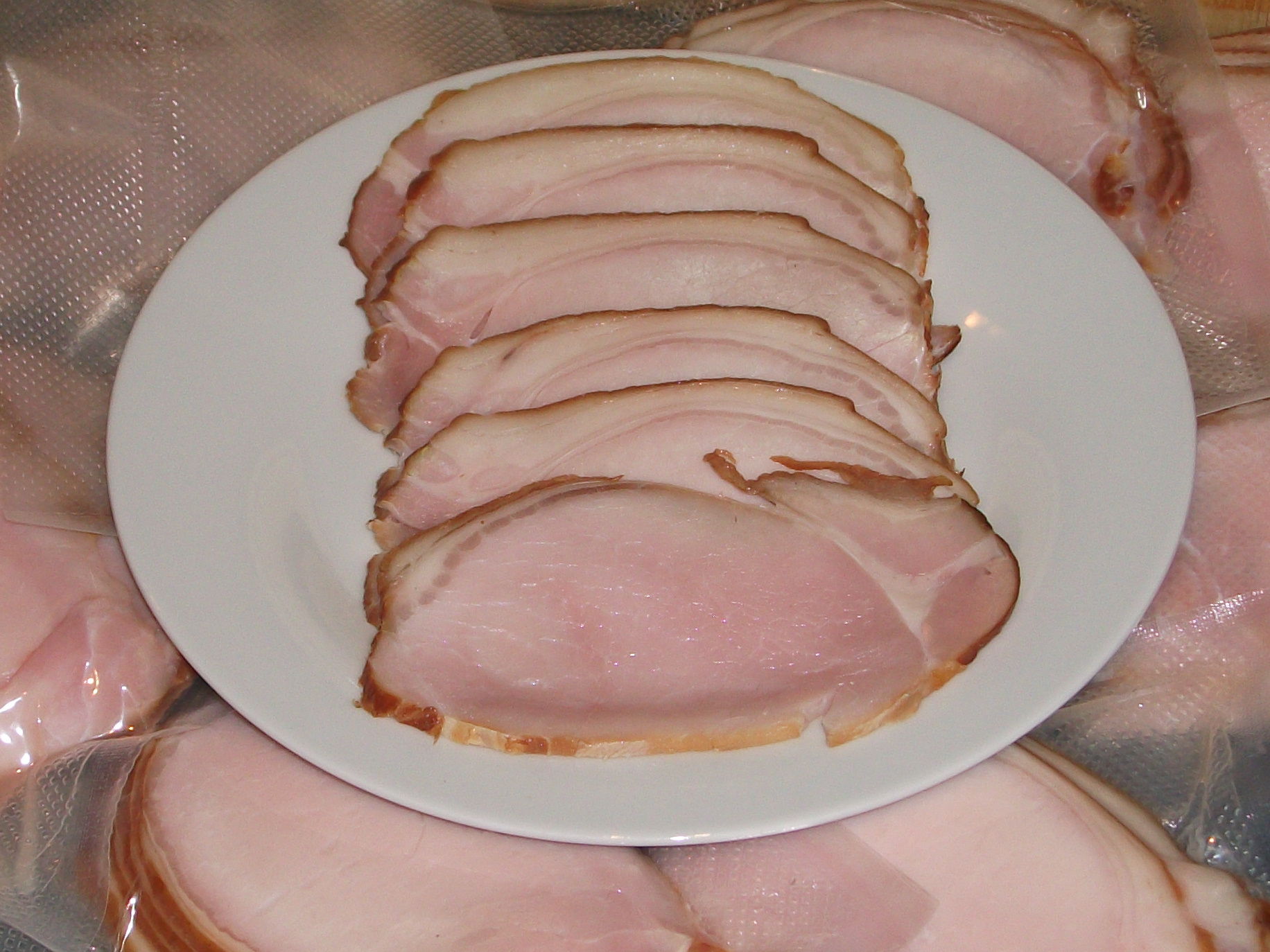
It’s not as well cured as I’d like, maybe a stronger brine for less time would be better. If I did that, I’d also let it rest for a good few days for the cure in the meat to equalise throughout it. I really should have done that with this piece. That’s said, it’s a nice product with a pleasant smoky taste.
I can see no advantage in brine curing it unless you are making large amounts. For the home curer, a simple dry cure would be easier and cost less. With this adaption, it’ll be regular on my list of cures.
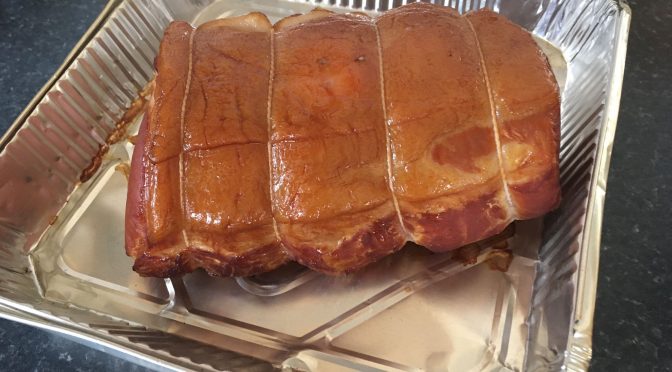
Hi Phil,
I lived in Germany for a total of about 14 years and Kasseler was a real favourite of mine. When I moved to France, I couldn’t buy it there, so decided to make it myself. In fact, it started my smokehouse obsession!
May I suggest the following recipe for the brine.
For a pork loin without back ribs, 4 – 5 pounds (or Turkey Breast)
2 pints (1 litre) water
3 Tblsp kosher salt
2 Tblsp sugar
1 tsp pink salt (curing powder#1)
Fresh or dried sage leaves
1 tsp. dried thyme
1 Tblsp juniper berries (crushed)
1 tsp. ground coriander
I’ve used this to make a Kasseler that’s as good as any I tasted in Germany. In fact, I tried it out on a German friend who on tasting it, started to cry. Apparently, it was just like his mother had made.
I would also suggest that you cold smoke the cured joint (14 hours in that alder smoke is enough) . Once cured, smoked and matured for 24 hours, it can be vacuum packed and frozen until needed. Probably the best way to cook it is in a slow oven, wrapped in foil.
I’ve also used the recipe to make a turkey breast version which is acceptable to people who don’t eat pork.
I hope this will help. By the way, where do you get your alder?
David
Thanks for that David. I will certainly use it when I make a ‘proper’ Kasseler. To be honest, mine was very much only ‘in the style of’ kasseler.
Thx my grandma used to make it. And I’ve been using a bacon recipe added fresh sage garlic thyme pepper and a couple of bay leaves. It was more like bacon but always missed Oma’s recipe. I’ll give this a try. Thx for sharing.
Hi Phil,
Thanks for your Kessler post, I would prefer to dry cure so should I just use the bacon calculator and add some botanicals?
Cheers
John
I made it here, John: Hot smoked pork loin
(Sorry for the delay in replying – the dreaded Covid got me!)